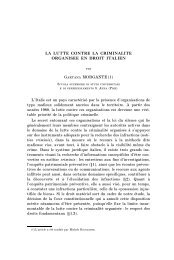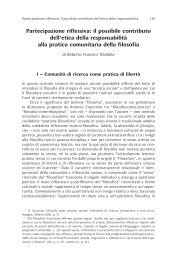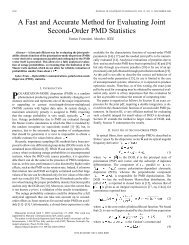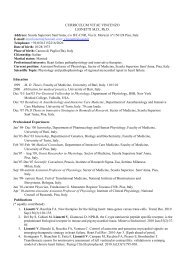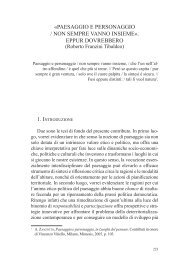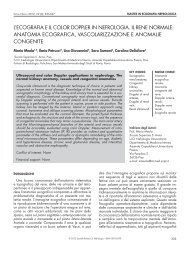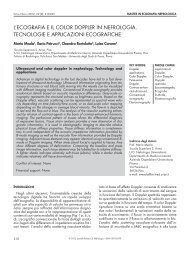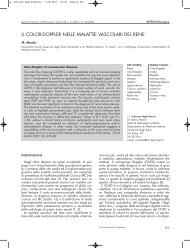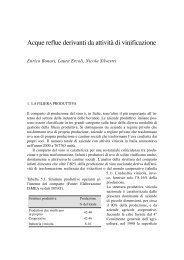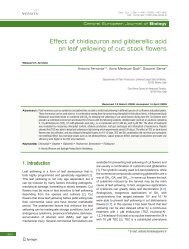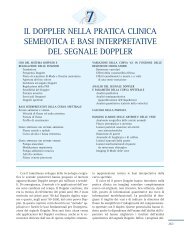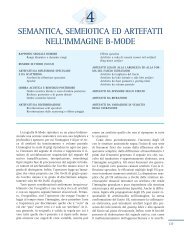Wireless capsule endoscopy: from diagnostic devices to ...
Wireless capsule endoscopy: from diagnostic devices to ...
Wireless capsule endoscopy: from diagnostic devices to ...
You also want an ePaper? Increase the reach of your titles
YUMPU automatically turns print PDFs into web optimized ePapers that Google loves.
Biomed Micro<strong>devices</strong> (2007) 9:235–243 241<br />
Fig. 11 Working principle of Norika WCE<br />
Three coils are placed inside the <strong>capsule</strong>, acting as ro<strong>to</strong>r<br />
coils. Three coils, embedded in a vest-like jacket, act as<br />
sta<strong>to</strong>rs. The direction of sta<strong>to</strong>rs magnetic field sets the<br />
rotative direction. Localization and tilt can be detected with<br />
respectively 5 mm and 15 ◦ of deviation. Moreover Norika<br />
Project Team has been evaluating the use of near-infrared<br />
light in the acquisition of translucent images of the s<strong>to</strong>mach<br />
in order <strong>to</strong> see mucosal pathology behind gastric folds. In<br />
fact near-infrared light, with a wavelength ranging between<br />
800 and 1200 nm, is able <strong>to</strong> pass through human body 10<br />
times better than other types of radiation whose wavelength<br />
does not belong <strong>to</strong> this range.<br />
In the body of the pill about 40% of the volume is free and<br />
might host reservoirs for drug delivery or miniaturized knives<br />
and scissors for MIS or sensors for advanced <strong>diagnostic</strong><br />
tasks.<br />
According <strong>to</strong> industry insiders, the Norika pill needs<br />
further years of development, before entering the market<br />
(Fuyuno, 2005).<br />
Au<strong>to</strong>nomous robotic <strong>capsule</strong><br />
Intelligent Microsystem Center (IMC), Seoul (South<br />
Korea) has launched the EMILOC project (Endoscopic<br />
MIcro<strong>capsule</strong> LOcomotion and Control) and since 2004<br />
has been supporting a research team of Scuola Superiore<br />
Sant’Anna (SSSA), Pisa (Italy), <strong>to</strong> develop a robotic WCE<br />
able <strong>to</strong> move au<strong>to</strong>nomously in the GI tract.<br />
In this regard, the advent of robotics paves the way for<br />
a swallowable and disposable complete medical platform<br />
integrating actua<strong>to</strong>rs for active locomotion, sensors for diagnosis<br />
and therapy, and <strong>to</strong>ols for MIS inside the digestive<br />
tract (Menciassi et al., 2005). In the recent past robotics has<br />
Fig. 12 EMILOC robotic <strong>capsule</strong> developed at Scuola Superiore<br />
Sant’Anna<br />
been successfully applied <strong>to</strong> colonoscopy (Dario et al., 2004;<br />
Swain, 2005).<br />
The medical rationale of using micro-robotics <strong>to</strong> enable<br />
active <strong>capsule</strong> locomotion and control lies in the need <strong>to</strong><br />
actively steer the <strong>capsule</strong> inside the digestive tract for improved<br />
<strong>diagnostic</strong> and especially therapeutic means. This<br />
medical need is unmet by current capsular technologies.<br />
In particular the SSSA robotic <strong>capsule</strong> has an active locomotion<br />
based on a set of bioinspired legs. This solution<br />
offers various advantages: an accurate control on the trajec<strong>to</strong>ry<br />
allowing the <strong>capsule</strong> <strong>to</strong> pass over critical areas without<br />
<strong>to</strong>uching them; adaptability <strong>to</strong> organs with different shape,<br />
such as the large and the small intestine; fine position control,<br />
by varying the extension and orientation of the legs;<br />
high velocity <strong>to</strong> reduce the length of the journey inside the<br />
GI tract.<br />
The dimensions of the <strong>capsule</strong> shown in Fig. 12 are a diameter<br />
of 12 mm and a length of 30 mm. It has six legs, made<br />
of superelastic shape memory alloy (SMA), a well known<br />
material in the biomedical industry for its biocompatibility.<br />
Each leg has a round tip, ending with 200 µm high hooks <strong>to</strong><br />
provide friction for locomotion. Legs can fit <strong>to</strong> organs with<br />
different geometry thanks <strong>to</strong> a flexible knee. Despite their<br />
sharpness, the hooks did not damaged <strong>to</strong>o heavily the tissue<br />
during both in vitro and in vivo tests on animals, confirming<br />
what Atuma et al. had previously found (2001). Each leg is<br />
independently actuated by a SMA actua<strong>to</strong>r, whereas a human<br />
machine interface (HMI) is responsible for the control of the<br />
movement.<br />
The camera, based on CMOS technology, has a resolution<br />
of 320 × 320 pixels.<br />
Springer



